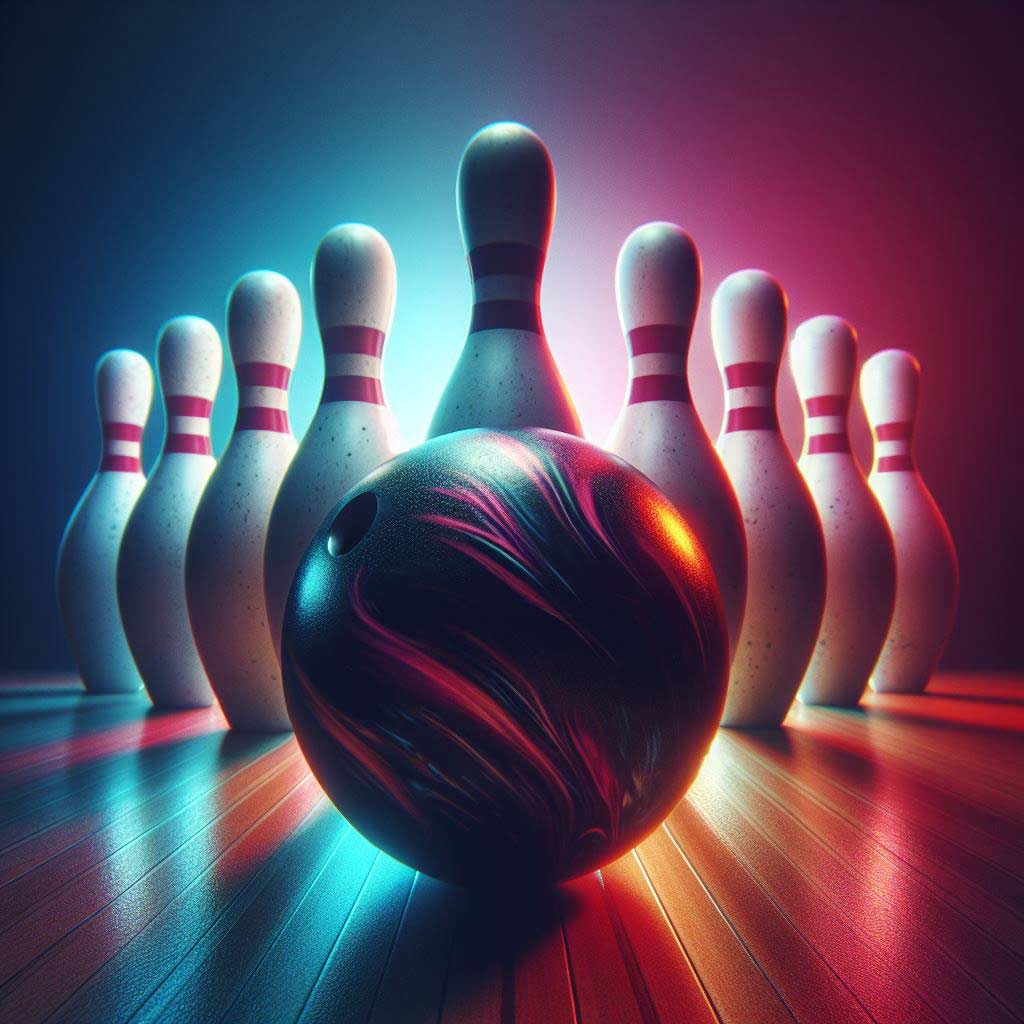If you’re new to the world of bowling, you’ve probably heard the terms “strike” and “spare” thrown around quite a bit. While strikes are generally celebrated with enthusiastic cheers and high-fives, the humble spare often gets overlooked.
However, don’t let its understated nature fool you – consistently converting spares is crucial to becoming a formidable bowler. In this comprehensive guide, we’ll dive deep into the mechanics, scoring, and strategies surrounding spares, empowering you to unlock your full potential on the lanes.
What is a Spare in Bowling?
Before we delve into the intricacies of spares, let’s establish a clear understanding of what they are. In bowling, a spare occurs when you knock down all ten pins using two consecutive rolls within the same frame. It’s a solid accomplishment, though not as coveted as the elusive strike, where all pins are toppled with a single roll.
The key difference between a spare and a strike lies in the scoring system. With a strike, you’re awarded the maximum frame score of 30 points (10 pins knocked down, plus the value of your next two rolls). Conversely, a spare earns you 10 points for that frame, plus the value of your next roll.
While spares may not seem as glamorous as strikes, they’re an essential component of consistent scoring and should never be underestimated. In fact, many professional bowlers attribute their success to their ability to consistently convert spares, which can significantly boost their overall score.
How Does a Spare Affect Your Score?
Now that we’ve defined what a spare is, let’s explore how it impacts your score. In bowling, your total score is calculated by adding up the points earned in each frame. When you get a spare, you’re awarded 10 points for that frame, plus the value of your next roll.
For example, let’s say you get a spare in the first frame, followed by a roll of 5 pins in the next frame. Your score for the first frame would be 15 (10 for the spare, plus 5 for your next roll). This scoring system highlights the importance of consistently converting spares, as each one you pick up directly contributes to your overall score.
To further illustrate the impact of spares, consider the following scenario:
- Game 1: You bowl 10 consecutive frames without any spares or strikes, knocking down 9 pins each frame.
- Total score: 90 (9 pins x 10 frames)
- Game 2: You bowl the same 9 pins per frame but convert all 10 frames into spares.
- Total score: 190 (10 pins per spare, plus 9 pins for the next roll in each frame)
As you can see, consistently converting spares more than doubles your score compared to leaving open frames. This example underscores the significant scoring potential that spares offer, making them an invaluable asset in your bowling arsenal.
Strategies for Converting Spares
Now that you understand the importance of spares, let’s explore some strategies to help you consistently convert them:
- Leaving a Makeable Spare: The first step to converting a spare is setting yourself up for success by leaving a manageable pin configuration. While some spare setups are more challenging than others, it’s generally advisable to aim for leaving as few pins as possible, ideally just one or two.
- Ball Selection and Technique: When it comes to spare shooting, ball selection and technique are paramount. Many bowlers prefer using a plastic or polyurethane ball for spares, as these balls tend to have a straighter trajectory and are less prone to hooking or curving unexpectedly. As for technique, it’s essential to focus on a consistent release, ensuring that your hand is behind the ball throughout the release and that your wrist remains firm. Additionally, maintaining a consistent target line and adjusting your body position accordingly can significantly improve your accuracy.
- Practice Drills: Like any skill in bowling, consistently converting spares requires dedicated practice. One effective drill is to set up various spare configurations and practice shooting at them repeatedly. This not only improves your muscle memory and accuracy but also builds your confidence in tackling different spare setups.
Another valuable practice technique is to introduce different lane conditions and oil patterns. This simulates real-life scenarios and trains you to adapt your spare shooting technique accordingly.
Common Spare Shooting Mistakes and How to Avoid Them
Even the most seasoned bowlers can fall victim to common mistakes when shooting for spares. Let’s explore some of these pitfalls and how to avoid them:
- Crossing Over the Line: One of the most common mistakes in spare shooting is crossing over the foul line with your feet or allowing your sliding foot to touch the line. This results in an automatic foul, rendering your spare attempt null and void. To avoid this, be mindful of your foot placement and release the ball before reaching the foul line.
- Improper Ball Release: An improper ball release can significantly affect your accuracy and consistency. Common issues include opening the wrist too early, failing to follow through with your swing, or releasing the ball with an incorrect axis rotation. Practicing proper release techniques and maintaining a firm wrist throughout the swing can help mitigate these issues.
- Lack of Focus and Concentration: Spare shooting requires a high level of focus and concentration, as even the slightest lapse can lead to missed opportunities. It’s essential to stay present in the moment, block out distractions, and maintain a consistent pre-shot routine to help you remain focused.
- Overthinking or Overanalyzing: While it’s important to analyze and adjust your technique when necessary, overthinking or overanalyzing during a spare shooting situation can be counterproductive. Trust your skills and muscle memory, and avoid overcomplicating the process.
Benefits of Consistently Converting Spares
By now, you’ve likely recognized the pivotal role that spares play in boosting your overall score. However, the benefits of consistently converting spares extend far beyond just numbers:
- Increased Scoring Potential: As we’ve discussed, consistently converting spares can significantly increase your scoring potential, opening up opportunities for higher game scores and series totals.
- Improved Consistency and Confidence: When you consistently convert spares, you develop a sense of consistency and confidence in your game. This positive mindset can translate into improved performance across all aspects of bowling, as you feel more in control and less prone to streaks of missed opportunities.
- Competitive Advantage: In league or tournament play, consistently converting spares can provide you with a competitive edge over opponents who struggle in this area. Every spare you convert contributes to your overall score, potentially making the difference between winning and losing close matches.
Spare Shooting for Different Bowling Styles
While the fundamental principles of spare shooting remain the same, it’s important to recognize that different bowling styles may require slight adjustments:
- Straight Bowling Style: For bowlers who prefer a straight ball path, spare shooting can be relatively straightforward. The key is to maintain a consistent target line and release, ensuring that the ball travels in a straight trajectory towards the intended pins.
- Curve Bowling Style: Those who employ a curved ball path may need to make slight adjustments when shooting for spares. Depending on the pin configuration, you may need to adjust your target line or release point to compensate for the ball’s natural hook or curve.
- Left-Handed and Right-Handed Bowlers: The dominant hand used in bowling can also impact spare shooting techniques. Left-handed bowlers may need to adjust their footwork and target lines differently than right-handed bowlers, especially when dealing with certain pin configurations.
- Lane Conditions and Oil Patterns: The condition of the lanes and the specific oil pattern in use can also influence spare shooting strategies. Drier lanes may require more aggressive ball speeds or adjustments to your release, while heavily oiled lanes may call for a more controlled approach.
Conclusion
In the end, mastering spare shooting is an essential skill for any bowler looking to take their game to new heights. While it may not carry the same glamour as the coveted strike, consistently converting spares can significantly boost your scores and provide a competitive edge.
Embrace the challenges of different spare setups and lane conditions, continually refine your techniques, and stay dedicated to regular practice. With perseverance and an unwavering focus, you’ll soon find yourself knocking down those final pins with precision and confidence.
Remember, every spare counts towards your overall score, making them invaluable assets in your bowling arsenal. So step up to the line, trust your skills, and let each converted spare be a testament to your hard work and commitment to the game. The path to bowling excellence starts with embracing the humble spare.





